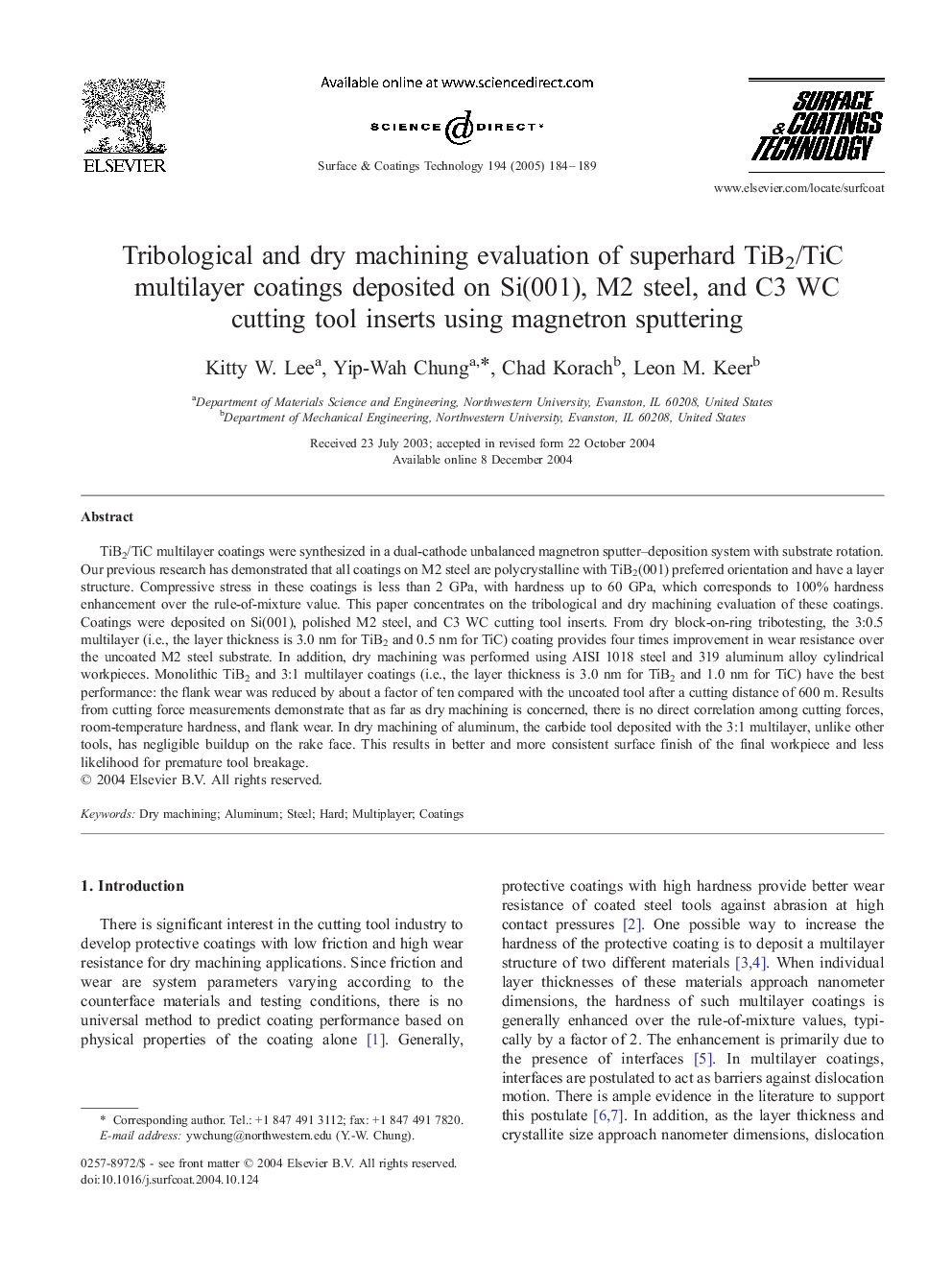| کد مقاله | کد نشریه | سال انتشار | مقاله انگلیسی | نسخه تمام متن |
|---|---|---|---|---|
| 9809768 | 1517716 | 2005 | 6 صفحه PDF | دانلود رایگان |
عنوان انگلیسی مقاله ISI
Tribological and dry machining evaluation of superhard TiB2/TiC multilayer coatings deposited on Si(001), M2 steel, and C3 WC cutting tool inserts using magnetron sputtering
دانلود مقاله + سفارش ترجمه
دانلود مقاله ISI انگلیسی
رایگان برای ایرانیان
کلمات کلیدی
موضوعات مرتبط
مهندسی و علوم پایه
مهندسی مواد
فناوری نانو (نانو تکنولوژی)
پیش نمایش صفحه اول مقاله

چکیده انگلیسی
TiB2/TiC multilayer coatings were synthesized in a dual-cathode unbalanced magnetron sputter-deposition system with substrate rotation. Our previous research has demonstrated that all coatings on M2 steel are polycrystalline with TiB2(001) preferred orientation and have a layer structure. Compressive stress in these coatings is less than 2 GPa, with hardness up to 60 GPa, which corresponds to 100% hardness enhancement over the rule-of-mixture value. This paper concentrates on the tribological and dry machining evaluation of these coatings. Coatings were deposited on Si(001), polished M2 steel, and C3 WC cutting tool inserts. From dry block-on-ring tribotesting, the 3:0.5 multilayer (i.e., the layer thickness is 3.0 nm for TiB2 and 0.5 nm for TiC) coating provides four times improvement in wear resistance over the uncoated M2 steel substrate. In addition, dry machining was performed using AISI 1018 steel and 319 aluminum alloy cylindrical workpieces. Monolithic TiB2 and 3:1 multilayer coatings (i.e., the layer thickness is 3.0 nm for TiB2 and 1.0 nm for TiC) have the best performance: the flank wear was reduced by about a factor of ten compared with the uncoated tool after a cutting distance of 600 m. Results from cutting force measurements demonstrate that as far as dry machining is concerned, there is no direct correlation among cutting forces, room-temperature hardness, and flank wear. In dry machining of aluminum, the carbide tool deposited with the 3:1 multilayer, unlike other tools, has negligible buildup on the rake face. This results in better and more consistent surface finish of the final workpiece and less likelihood for premature tool breakage.
ناشر
Database: Elsevier - ScienceDirect (ساینس دایرکت)
Journal: Surface and Coatings Technology - Volume 194, Issues 2â3, 1 May 2005, Pages 184-189
Journal: Surface and Coatings Technology - Volume 194, Issues 2â3, 1 May 2005, Pages 184-189
نویسندگان
Kitty W. Lee, Yip-Wah Chung, Chad Korach, Leon M. Keer,